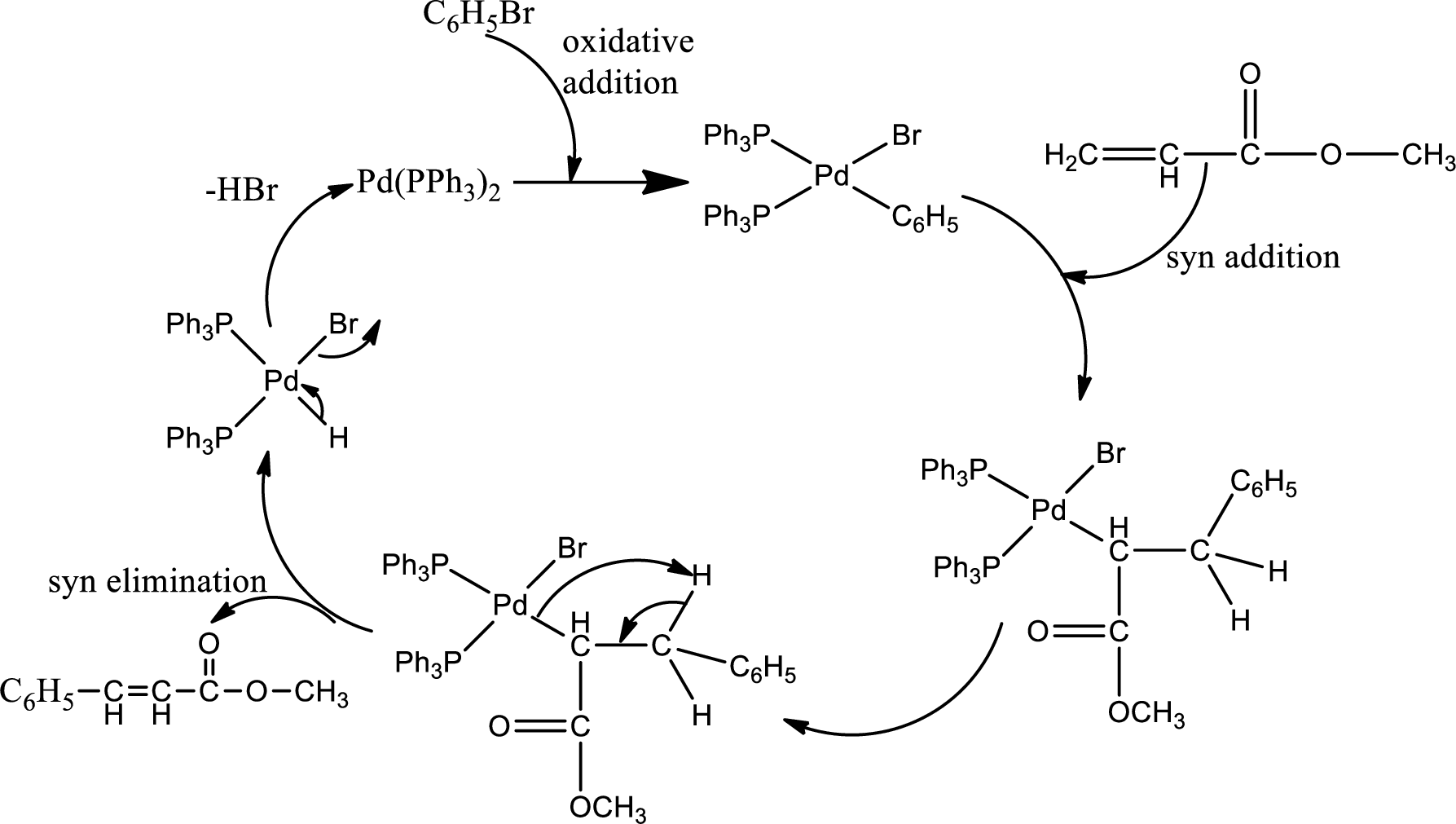
Interpretation:
When the starting
Concept Introduction:
Heck reaction:
A palladium-catalyzed reaction of the carbon group of a haloalkene substituted for a hydrogen on double bonded carbon of an alkene is said to be Heck reaction.

Explanation of Solution
The given reaction is

Mechanism:
Step-1:
Formation of Heck catalyst:
Heck catalyst s formed by the reduction of palladium from

Step-2:
Catalytic cycle for the formation of product:

The addition of alkene to the catalyst is syn addition and elimination of product is also syn elimination. The inversion of configuration occurs in the addition and forms E-product.
Want to see more full solutions like this?
Chapter 24 Solutions
OWLv2 with MindTap Reader, 1 term (6 months) Printed Access Card for Brown/Iverson/Anslyn/Foote's Organic Chemistry, 8th Edition
 Organic ChemistryChemistryISBN:9781305580350Author:William H. Brown, Brent L. Iverson, Eric Anslyn, Christopher S. FootePublisher:Cengage Learning
Organic ChemistryChemistryISBN:9781305580350Author:William H. Brown, Brent L. Iverson, Eric Anslyn, Christopher S. FootePublisher:Cengage Learning Organic Chemistry: A Guided InquiryChemistryISBN:9780618974122Author:Andrei StraumanisPublisher:Cengage Learning
Organic Chemistry: A Guided InquiryChemistryISBN:9780618974122Author:Andrei StraumanisPublisher:Cengage Learning

